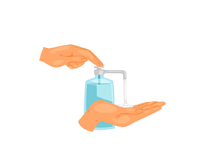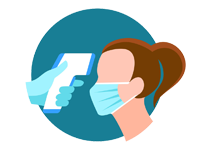Buprenorphine
Buprenorphine is a prescription medication used for pain management and the treatment of opioid dependence. It belongs to the class of partial opioid agonists, which help reduce withdrawal symptoms and cravings in people addicted to opioids. Buprenorphine is commonly used in medication-assisted therapy (MAT) programs to help individuals recover from opioid addiction. It provides effective pain relief while lowering the risk of misuse compared to full opioid agonists.
Uses of Buprenorphine
- Treats moderate to severe pain
- Manages opioid dependence and withdrawal symptoms
- Reduces cravings for opioids in addiction treatment
- Used in combination with naloxone to prevent misuse
How Buprenorphine Works
Buprenorphine works by binding to opioid receptors in the brain, partially activating them to provide pain relief and reduce withdrawal symptoms. Unlike full opioids, it has a ceiling effect, meaning higher doses do not increase its effects, which helps lower the risk of overdose and dependence.
Benefits of Buprenorphine
- Provides effective pain relief
- Helps in opioid addiction treatment
- Has a lower risk of overdose compared to full opioids
- Reduces cravings and withdrawal symptoms
- Can be used for long-term addiction management
How to Take Buprenorphine
Buprenorphine is available as sublingual tablets, films, injections, and patches. The sublingual form is placed under the tongue to dissolve, while patches are applied to the skin for continuous pain relief. Injectable forms are administered by healthcare professionals. The dosage varies depending on the condition being treated and should be taken as prescribed by a doctor.
Types of Dosage Available
- Sublingual tablets
- Sublingual films
- Transdermal patches
- Injectable solutions
Side Effects of Buprenorphine
- Dizziness and drowsiness
- Nausea and vomiting
- Headache
- Constipation
- Sweating and dry mouth
- Respiratory depression in high doses
Safety Advice
- Use only under medical supervision
- Avoid alcohol and other CNS depressants
- Not recommended during pregnancy unless prescribed
- May cause drowsiness; avoid driving or operating machinery
- Gradual tapering is advised to prevent withdrawal symptoms
Frequently Asked Questions (FAQs)
Q: What is Buprenorphine used for?
A. Buprenorphine is used for pain relief and opioid addiction treatment by reducing withdrawal symptoms and cravings.
Q: How should I take Buprenorphine?
A. It is available as sublingual tablets, patches, and injections. Follow your doctor's instructions on the correct dosage and form.
Q: Is Buprenorphine addictive?
A. While it has a lower risk of dependence than full opioids, misuse can still lead to addiction. It should be taken only as prescribed.
Q: Can Buprenorphine cause withdrawal symptoms?
A. Yes, stopping it suddenly can cause withdrawal symptoms. It is advised to taper the dose under medical supervision.
Q: Can I drive after taking Buprenorphine?
A. Buprenorphine may cause drowsiness and dizziness. Avoid driving or operating heavy machinery until you know how it affects you.
Download India's most affordable pharmacy app
- Compare with medicine prices
- Save upto 90% on your medicine bills

Temperature Controlled storage and delivery

Regular Sanitization

Disinfected Packaging









 Added!
Added!